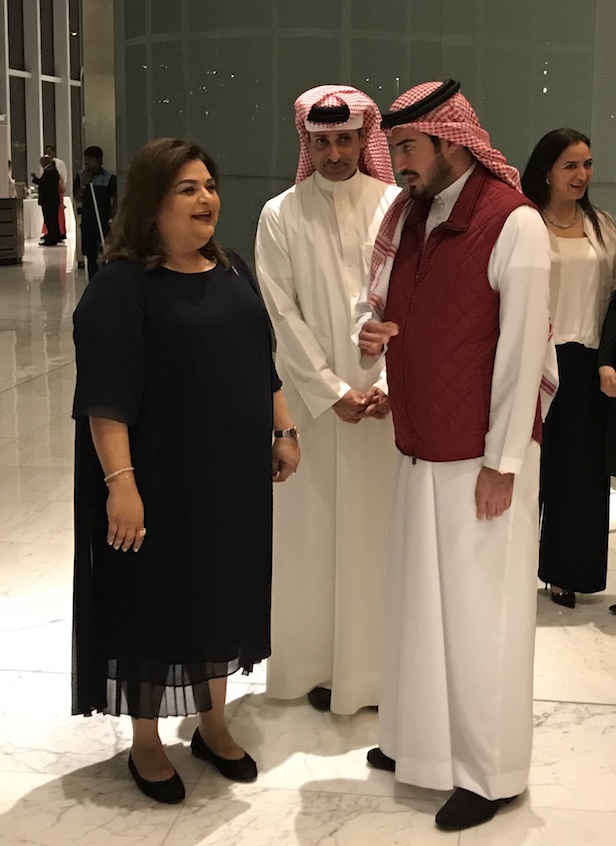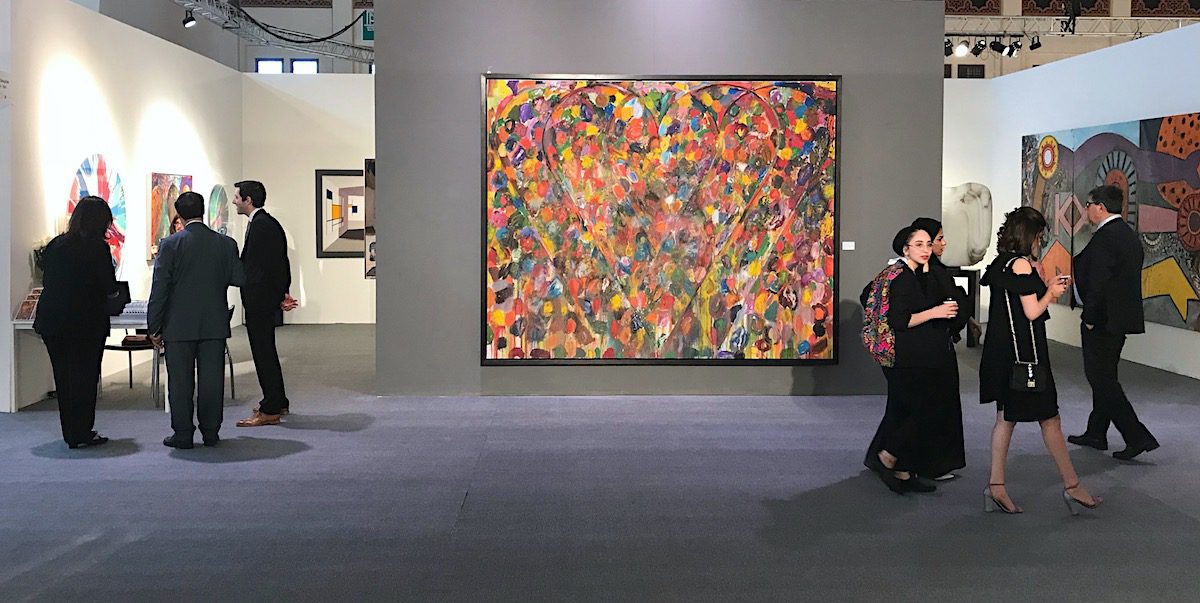ArtBAB, which took place in Bahrain in this Spring, embracing Bahrain’s cultural heritage, strengthening the base of their arts economy by empowering and educating local artists. The fair reinforced Bahrain’s position in the Gulf as a regional arts hub, inspiring entrepreneurship, art education and local skills development.
This year our entire focus of the fair was education and creation – Kaneka Subberwal
Here we have three short interviews with three different women who helped put this year’s fair together, shedding light on their different aspects of curating.
Artlyst editor, Paul Carter Robinson began by speaking with Shefali Munshi. Her role was assisting with the organising of the fair as well as arranging events for the speakers and press attending the fair.
Paul: Hi Shefali, it is lovely to speak with you this morning. Could you tell me a little bit more about ArtBAB?
Shefali: Of course, it is great to speak with you, Paul. The First edition launched in London in 2016, before we moved it to Bahrain. The first ArtBAB set Bahrain on the art culture map, and it was under the Patronage of her Royal Highness, as it still is. It invites international artists into Bahrain, but it also transports Bahraini art and culture to different parts of the world. So, Art Select takes different Bahraini artists to different areas such as London, Paris, India – through this they endeavour to bridge the gap between Bahrain and other parts of the world.
The next interview was with Kanika Subberwal. Kanika is the mastermind behind it all, she conceived the idea and curated the fair.

Paul: Hi Kanika. Let’s jump straight in – how did you get so passionately involved in art and how have you made this a reality? Because it is a big job to start a fair.
Kanika: I came to Bahrain exactly a decade ago. Previously, I used to run galleries back in Dubai. Bahrain, like it does to everybody else, completely took me and I felt such a warmth towards the country. There is such an art grounding in Bahrain, that is what hooked and engaged my passion. Over a period of time, engaging with the artists and seeing the way the art world works I could see where things could be improved for marketing itself. The emphasis is a lot on developing and this is where I helped Bahrain to grow. Yes, I conceived the project, but I wouldn’t have got anywhere without the arms, that being the patronage of her Royal Highness, who is an artist herself, as well as her strategic partner Tamkeen. They invest directly into the human resource foundation of Bahrain. That investment engagement gave us a lot of the foundation.
It has been a mammoth journey because when you’re venturing out into something, there are always set backs, and there is always a constant comparison of ‘will you be like your neighbours’. It is our own niche fair so as you can see around you it’s warm and not intimidating because that’s who we are and what Bahrain represents. There is a lot of engagement, and I remember when I set up the artists pavilion I got a lot of criticism, but that is inevitable with anything new.
Paul: You have a wonderful passion for art, and that is what I see when I speak to you now. It is refreshing to see someone so passionate about the connoisseurship of art and not just the monetary value of it.
Kanika: It is interesting that you say that, you are actually the first person to say this because everybody I come across tells me I am very commercial. I can’t emphasise enough that I need to position the artists commercially for them to be self-sustaining – it does not make the project commercial. What we need is a model that works, yes there must be sales but there also needs to be other things, and that is what we are working on – making sure everything goes full circle. I’m very lucky to have a patron, and I am very lucky to have Tamkeen who help me make this possible.
Paul: I think one of the other wonderful things about this fair is to see all the universities represented by stands because ultimately, they are the future.
Kanika: This year our entire focus of the fair is education and creation, which is why we have brought in a lot of students because eventually, they will be the artists with stands. It is about giving them the chance to learn and experience what a fair of this nature is like to allow them to grow. We encourage active participation.
The final interview was with the designer of the artist pavilion, Kavita Singh.
Paul: Hi Kavita, thanks for taking the time to chat with me today. So explain a bit about what is going on here.
Kavita: This is called a motley crew because as you can see they are a bunch of ragtag artists that have each contributed to this large mural.
Paul: I was lucky enough to chat to a couple of the artists yesterday, and they said they are hoping to get a few commissions to do things where there are constructions, and they should because look how fantastic they are!
Kavita: I am positive that they will get a lot of interest and lots of people have been asking me about it.
Paul: They are all such interesting artists.
Kavita: It is interesting we have youngsters getting this involved and working late nights to create what you see before you. They have turned it all around in ten days which is burning the midnight oil throughout. I understand the passion that must drive them to achieve such things.
Paul: It was lovely to talk to you, thank you for your time.
Interview P C Robinson © Artlyst 2018 Top Photo: Alon Zakaim Fine Art ArtBAB Paintings By Jim Dine (Center) Alan Davie (Right) Damien Hirst (Left)
Visit ArtBAB Here
Read More On ArtBAB Here

